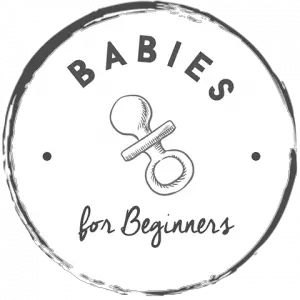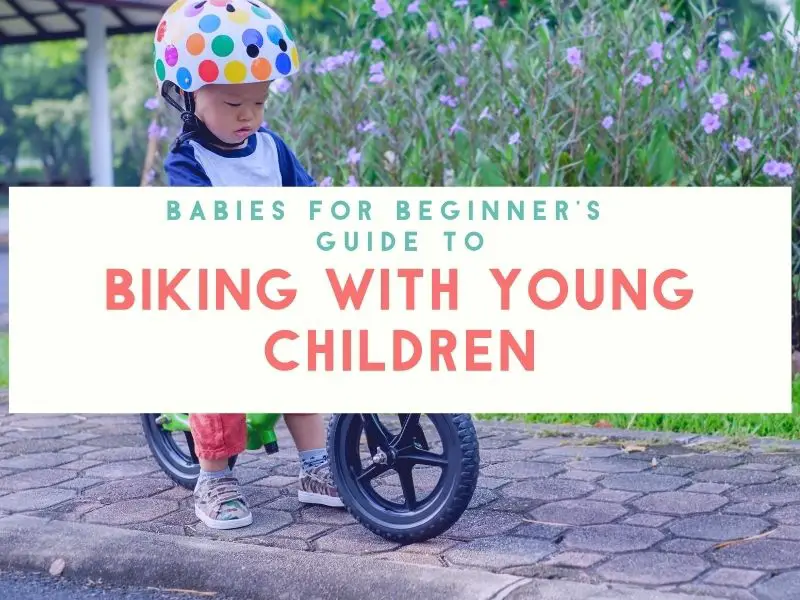Biking with your children is a wonderful way to get outside, enjoy the fresh air, and spend time together as a family.
And it’s not just quality time, there are many reasons why biking makes for a great family activity. It’s inexpensive (once you own bikes), it’s great for learning, and it’s a fantastic form of exercise.
Even if you live in an area where there is traffic or hills, biking with a baby or toddler can still be done safely!
Here are my seven tips for making that family bike ride a fun and safe part of your family lifestyle even with younger kids:
Tip One: Start Young
If you get your child on a bike at a young age, If you get your child on a bike at a young age, they’ll grow up with cycling as part of their life and won’t challenge the idea later on. With time, they’ll also be more active participants in bike riding and really enjoy it!
What Age Can You Take a Baby on a Bike?
Although there are child bike seats are designed for infants as young as nine months old out there, most pediatric experts say that you shouldn’t start this young.
According to Safe Kids Worldwide, “Babies around 9 months old are just becoming strong enough to hold up their necks, so it is not recommended that infants younger than 12 months ride in a bicycle seat, trailer, sidecar, or any other carrier. “
Once baby is a year old the International Bicycle Fund (IBF) recommends checking with a pediatrician to see if they have the neck development to safely go for a bike ride (Source).
What’s Safest: Seats or Trailers?
Once you’re given the green light for taking baby with you on your bike ride, you may be wondering which carrier is safest. While it’s pretty clear across the board that putting baby in a carrier is the least safe option, the choice between a seat or a trailer is a bit more of a gray area, and really depends on your level of skill on your bike.
The IBF has some rough risk analysis of seats and trailers as an option. Though they seem to say that trailers are slightly safer in terms of fall, the IBF doesn’t come down clearly in favor of one option or another as they seem to say that a proficient biker with a small child may be safer with a seat, because of the increased agility.
“We haven’t heard of enough accidents involving either to say that any higher risk is statistically significant.” The IBF states on their website. “Some road and traffic conditions favor trailers and other conditions favor child seats. Road and traffic considerations may be a more significant factor than stability issues so it can’t be said that one method is better than another in a given situation.”
Helmets On from Day One
Because of the fontanel, the soft spot in an infant’s skull, infants are susceptible to more head injuries than adults and so a helmet is a necessary part of any safe bike ride right from day one, especially in a child seat.
Though there is some debate around the need in a trailer with a good cage and five-point harness, the IBF does cite some reasons why it’s still a good idea.
Personally, I also like to start the rule about wearing helmets on the bike early so it’s in their DNA almost and there’s never a meltdown because suddenly at age 3 or 4 you’re demanding it.
When selecting a helmet, it’s imperative the helmet meets a recognized standard, like the American Society for Testing and Materials (ASTM), and fits properly. For helmets worn in a trailer and child seats, the helmet should be rounded in the back instead of flared, according to the IBF.
For more information on helmets go to www.ibike.org/education/helmet.htm.
Tip Two: Tailor the Vehicle to the Developmental Level of your Child.
Babies will of course need to be in a trailer, but once the child hits the toddler stage there are plenty of other options. Pay attention to each child and figure out what will work for them.
Options include trailers, trail-a-bike, tandem, a coupler to attach a child’s bike to an adult bike, or having the child ride his/her own bike.
Starting with Their Own Bike
Starting them riding independently early, with an age-appropriate bike is going to take your bike rides to the next level faster.
So just what type of bike? having trained my two daughters to ride differently, I definitely have some advice here!
Are Balance Bikes Better than Training Wheels (Stabilizers)?
Yes! Experts agree that balance bikes help children gain coordination and balance skills faster than a pedal bike, which builds their confidence and skills so they can move over pretty smoothly to a “big kid” bike (Source).
That has certainly been my experience with kids bikes. My oldest daughter, who was always ahead of the curve when it came to gross motor skills, learned to pedal a bike with training wheels first. My youngest daughter, who took much longer on average to reach milestones, learned to use a balance bike first.
The difference was shocking! The internal balance my youngest learned while playing with her balance bike had her riding a regular bike well before my oldest.
When to Start Balance Bike
Introducing a balance bike to a child around 18 months to 2 years of age with success is possible if they are already walking.
At 18 months, you can even let them toddle around with it indoors in a safe area to get them comfortable before taking them outdoors to safe biking trails, your front driveway, etc.
At what Age Should a Child be Able to Ride a Bike?
Kids usually learn to ride a bike with pedals (and no stabilizers/training wheels) between the ages of 3 and 8, with the average age being just over 5-years-old. For your child, it’s best to consider not just age, but other factors that determine if they are ready, such as skills and balance.
If you have doubts that your child is ready for this rite-of-passage milestone, then consult with your pediatrician or other medical professionals before proceeding any further.
Tip Three: Sandwich your Child (if Possible)
Once your little one is up and riding on their own, you’re going to have to have your eagle-eyes on them for a while.
Until your child develops the skills to ride safely in traffic on his/her own, create a sandwich with adults in front and behind if you can. The one in front sets the example for the child to follow, but the rear adult is there to keep an eye on her.
If you’re a lone parent and can’t call on a friend to join you, make sure you can watch your kiddo at all times until well after you feel comfortable with their skills, because accidents can happen with young riders unexpectedly.
Tip Four: Plan Your Route
A little planning ahead for your bike ride may save you from a headache.
Do your research and find the safest routes that are interesting to both you and your kiddo, so if you need to take a break it’s easy and enjoyable.
Preparing is extra important when biking on footpaths/sidewalks. Preparing ahead can help avoid something going wrong while riding alongside pedestrians who may not look out for bikers (or vice versa).
Tip Five: Keep Mileage Low and Take Plenty of Breaks
Just because you are itching to go for a century ride, your child most likely isn’t. Even if they love the idea of a long ride with you, they may not have the endurance to actually complete it.
Enjoy a slow, leisurely ride with your family and do your training ride another day. Monitor their energy levels and your own. If any of you are getting tired, take a break and try again another time.
Tip Six: Take Snacks
Every parent knows it’s important to pack snacks with a small child, but they are especially important on a bike ride where your ability to get home relies on their ability to keep going.
A hungry child is a cranky child and a cranky child on a bike is not going to be fun. Bring lots of snacks to keep their mood and energy levels up.
Tip Seven: Trust your Child
Kids are capable of way more than most parents give them credit for. When they are able to balance, steer, and pedal on their own, let them fly.
Give your child some freedom to explore their independence on the bike. Let them make mistakes while you’re there with a helping hand if needed and watch them learn from those errors without making it seem like an ordeal.
With good safety equipment – helmet and safety pads)- you can relax and know that every small spill now is teaching them the muscle skills to avoid larger spill years down the road when they are going faster and are on a bigger (or maybe even motorized) bike.
Trust In The Value
With just a little encouragement, planning, and experience, your family can enjoy many moments together in the great outdoors on your bikes.
Even better, as you spend a few hours of dedicated time together without all the distractions of modern society, you’ll be forming a bond with your child that will last for years to come.
Biking is great for the entire family and will provide memories for years to come.

